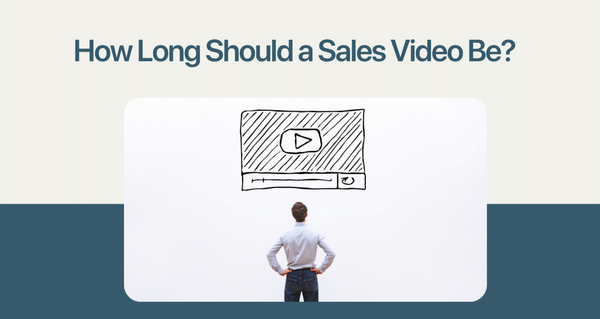Have you noticed how some brands are so popular in their niche that the name of the product becomes the name of the brand in time?
People don’t usually say “search it in a search engine,” they say “Google it.” This is the god-level of brand awareness.
The name of a brand becomes almost synonymously used with the product it offers- like Kleenex or Band-aid or Velcro. In business lingo, this is called a “generic trademark” or “proprietary eponym.”

That is the magic of brand awareness. The name and everything else associated with your brand become so familiar to your audience that it evokes immediate trust. This is why the reputation of your brand is a key factor in building a huge and loyal customer base.
But you don’t achieve such levels of brand awareness simply by selling the best product, or selling a product that’s the first of its kind.
No doubt, those things are important, but your marketing campaign needs a conscious and specific strategy to build brand awareness in order to become a household name.
What is Brand Awareness?
Brand awareness is, simply put, how much your target audience knows you. It is the extent to which a customer or prospect recognizes, recalls, and understands your brand.
And by brand, this includes your brand name, logo, and slogan, consistent visual and verbal imagery you use, your brand values, and of course, your products and services.
Brand Awareness vs Brand Recognition
The difference between brand awareness and brand recognition lies primarily in how deep that mental connection your brand has with your audience goes.
Brand recognition is simply how much a customer can relate and recall your brand from the visual symbols, style, and messages you put out, as well as the products and services that you offer.
Brand recognition is like meeting a person and then recalling their name and the basics like what they do for a living when you see them again.
Brand awareness is going deeper than mere recognition. It’s like meeting a person, and then going home thinking about how fun it was to talk to them. Each time you see a waitress in a restaurant, you think about them because you remember that that’s what they did. When you see them again, you smile and wave immediately, because you're excited to talk to them again.
That’s the gist of it basically. Brand awareness is about building an emotional association with your brand. Brand recognition is a simple recall by people, while awareness means the complete understanding of your brand and its values, and having a positive feeling about it, in addition to the recall.

Why is Brand Awareness Important?
Consider an issue of some fashion magazine. Have you ever noticed the difference in the full page ads given by a big-shot like Gucci, and some small, up and coming fashion label?
The Gucci ad will probably have a picture of a supermodel flaunting their product covering the entire page, with just the brand name. The small label on the other hand will have bubbles and little boxes all over the page describing who they are, what they sell, and why people should pay attention to them.
Gucci doesn’t need all that. Why? Because it’s Gucci.
Big companies, the ones that hold oligopolies in niches, rely hugely on their name to sell their products. Remove the labels from all the products of a kind on the market right now, and it may be hard for a customer to decide which one to buy.
It’s going to be quite a reach to try to aim for your brand to reach a level where you can simply rely on your brand name to sell things. Or become a proprietary eponym in your field. But there is still so much that brand awareness can accomplish for you.

1. Builds Trust, Loyalty, and Relationships
The better your customers know and understand your brand, the better they trust you. Familiarity builds trust. Once they have a positive association with your brand, they begin to build a relationship with your brand that isn’t much different from a relationship with another person.
And this in turn helps you build a loyal customer base. This customer base will repeatedly purchase from you to a point where they are reliant on you. They will also give positive reviews and recommendations which leads to an even greater expansion in the customer base.
2. Credibility Without Continued Effort
Brand awareness and ensured customer loyalty don’t mean that you can get lazy in your marketing efforts, but it does mean you can now focus your efforts on other places.
Apple doesn’t need to use its ads to talk about who they are and what they sell. They can instead use their time to talk about the value of their new products, and justify their high prices.
Their brand logo is now simply enough to ensure the credibility of their products in the eyes of the average customer. This means that when a customer is offered the option of an Apple product and a similar, maybe even identical product of a lesser-known brand, Apple will always win.
3. Increases Brand Equity
A good reputation of the brand translates directly to a higher value. Brand equity that comes from brand awareness lets you raise your prices without losing your customers.
Bettering customer perception adds value to all your products the same way increase in the actual quality of your products does. Your company also gets a better stock price.
How To Build Brand Awareness
Whether or not you're conscious of it, you're trying to build brand awareness with all of your marketing efforts that don't directly aim for a sale.
But in order to put your business smack dab in the minds of your audience, you need to put focused efforts into understanding and promoting brand awareness.
What you need to keep in mind is that building brand awareness is not something that you get just by running a gazillion ads across all platforms. Building brand awareness is a more subtle game.
You need to work smart, not rely on brute force. You need to have brand values and a personality that can connect with your audience, and connect with them on a human level if you hope to build a connection that lasts.

You need to work on perfecting the look, feel, and personality of your brand. Then you need to get your brand out there where your audience can see you.
Let’s look at how you can ensure maximum visibility and understanding of your brand and thereby build brand awareness.
1. Referral Programs
Referral Programs are schemes that you put out that offer your existing customers some reward if they bring in more business to your company. This can be a monetary reward, a gift card, a discount, or even a small percentage of the sales from the new customer they brought in.
These are a really efficient way of building your customer base because you use your existing customers to do your marketing for you. This leads to, in an ideal scenario, an exponential boost in awareness.
You're giving existing customers an incentive to promote your brand and give it positive recommendations. It’s a win-win scenario for all involved, and that’s why it works so well. It’s the best way to boost word-of-mouth awareness.

2. Begin Guest Blogging
A lot of content marketers make the mistake of not indulging in guest blogging because they fail to understand how writing for another site free of cost can be a good thing. But it is.
Guest blogging is the practice of creating and posting content on a third-party website or blog. But you make it clear that it was your brand that was responsible for the actual post.
What it does for you is it lets you borrow the reputation and viewers of the website that you are posting in. Especially if you land an opportunity to guest post on a reputed website, that can go a long way in boosting your brand’s visibility.
It also establishes your authority as an expert in your field. It also builds backlinks to your own website, which is invaluable from an SEO perspective.
This method also works because it is a mutually beneficial arrangement. The site you're posting on gets free content on their blog, and you get to increase brand awareness by increasing your reach.
3. Create Shareable Content
Content marketing is a great strategy to increase brand awareness. But it is not just enough to create good content, you need shareable content.
To get backlinks and mentions in other blogs, the best thing to do is create infographics. You need to spend a lot of time on work and research to create an infographic, but the benefits are worth it.
Most of your verbal content almost never gets directly quoted in another blog, but any marketer worth their salt will always credit the source when it comes to statistics. WordStream and Wyzowl manage to get thousands of shares with their infographics each time, and they are really making use of it.
The other face of shareability is social media marketing. The shareability of your posts is important for succeeding in becoming popular on social media. You can do that by posting content that people find interesting as opposed to content that plugs you directly. You can look for popular trends and work on them, instead of assuming a piece of content is relevant for the day and time.

4. Offer Freemium With Your Name On It
In a Freemium model, you give away your product for free. Well, that’s not the whole story. You let customers use your product, but with your brand name and the works attached to it. This strategy doesn’t work for all products of course but it can be really effective for some.
For example, you're offering a poster making platform to your customers. They can use it for free, but without removing your watermark. So anytime your customer uses that poster, you get free advertising.
If they want to put their own brand details on there, they need to pay for it. So either you end up with a paid customer, or with free marketing. This is exactly what tools like Adobe Spark does.
Your customer gets to use your product, and you get to put your name and brand details out there. You can include your brand name, logo, website link, or even a redirect to your landing page when your customers deploy your product. This is yet another instance of the effectiveness of mutually beneficial schemes.
5. Online Contests for UGC
Using UGC or user-generated content is a social media marketing strategy that has especially gained popularity in recent times. UGC is created by users, and not the brand.
You get users to generate content that is relevant to your brand and products, and you can share them on the social media accounts of your own brand. Firstly, it gets you popularity with the people who see the original post.
Especially if the post was made by an influencer or a popular social media personality, you can get great visibility this way.
Secondly, when you share the posts on your account, you get posts that look authentic and different. It’s a customer testimonial basically.
And people tend to trust stuff that is used, reviewed, and recommended by other people, even if it is a stranger on social media.
There are different strategies you can use to generate UGC. You can create brand-specific hashtags and encourage users to use them in their posts. Instagram especially is a hotbed for UGC campaigns.
Conducting contests is a popular tactic to use. But you don’t even need to give big rewards as prizes most of the time. Getting featured is a pretty big catch for most social media users, and they tend to jump at any opportunity to do so.
A popular example is the frequent contests conducted by National Geographic. They invite users to send their photos in. The photographers get reach through the National Geographic page, win or lose, and NatGeo gets original content they can post. They don’t need to just rely on photographers they hire and pay to generate content.
6. Pick Up Your LinkedIn Game
LinkedIn is often the most ignored and underestimated among all the social media platforms. If your business is about B2B services especially, LinkedIn is the place where your brand can effectively reach people and build awareness.
LinkedIn is a professional platform that does not get spammed with the content of all kinds like others. You can reach the right people and gain popularity among the right people if you use LinkedIn well.
Posting quality content can get you good attention on LinkedIn. It is a great place for networking with professionals. You can also search for individuals who fit your buyer persona and directly get in touch with them.
You can also use LinkedIn groups to network with like-minded people in the community and build contacts. This network you build here will go a long way in building brand awareness. It’s also a good place for you to post recruitment videos and such and attract good talent to your company.
How VideoForm Can Help Boost Brand Awareness
VideoForm is a tool that can help you with everything you need to build brand awareness. With the groundbreaking personalization techniques that VideoForm enables you to use, you can stand out from the crowd and get noticed.

By adding personalized elements to your videos and images, you can increase the chances that viewers will take action.
One great way to do this is by using Videoform. With Videoform, you can easily add personalized elements to your videos and images, such as names and company name. This can help to increase conversions by making it easier for viewers to connect with your content.
To build brand awareness, your brand needs to have a personality. You need to build customer relationships the same way you would build a personal relationship with a human, and VideoForm helps you do that. You can have actual human conversations with your viewers through VideoForm.
Try booking a call today to see the difference we make!

%20(1).png)


